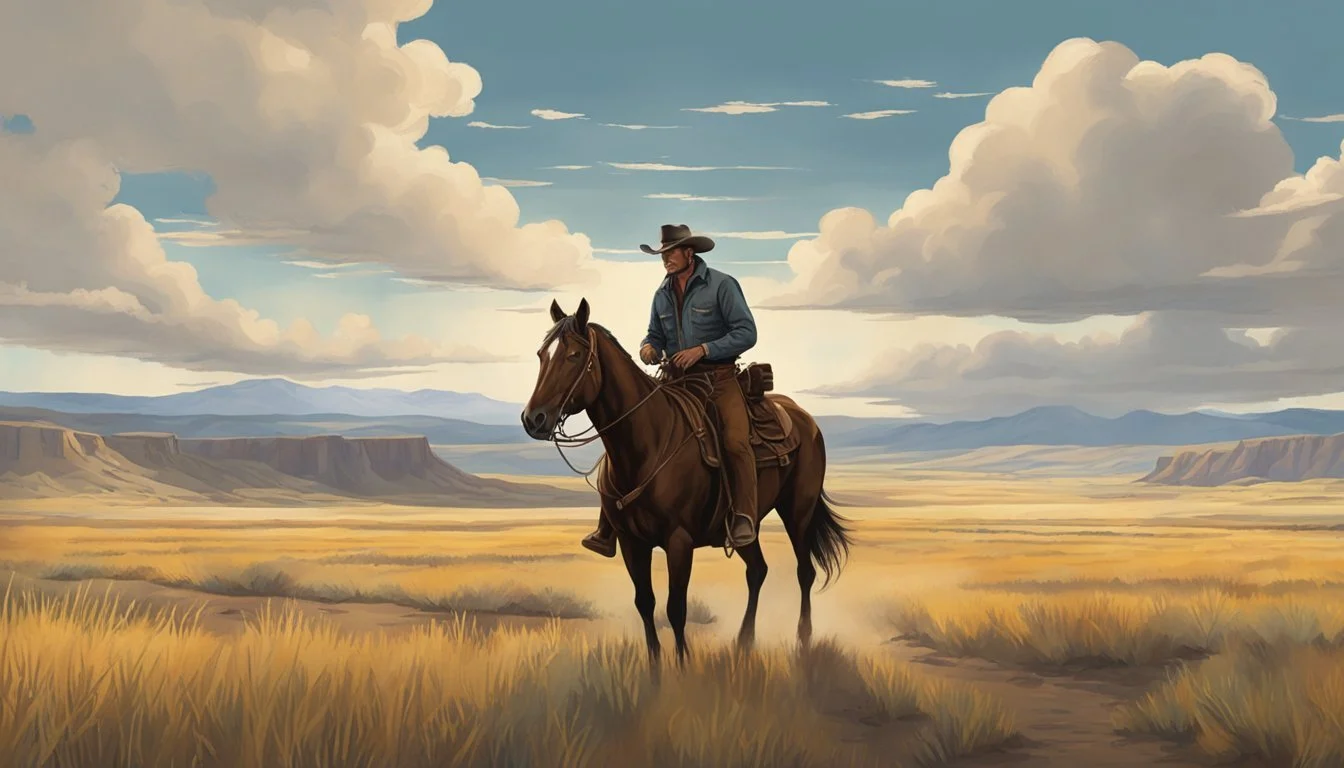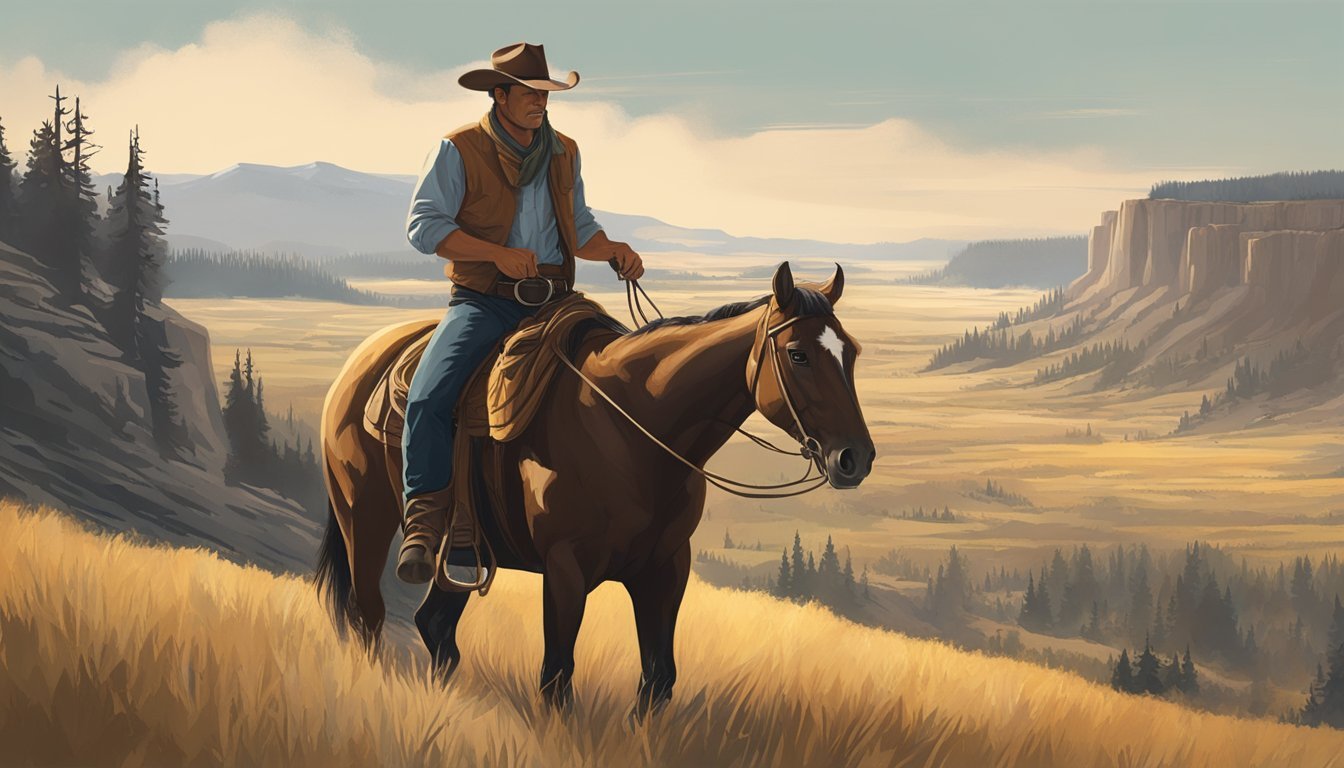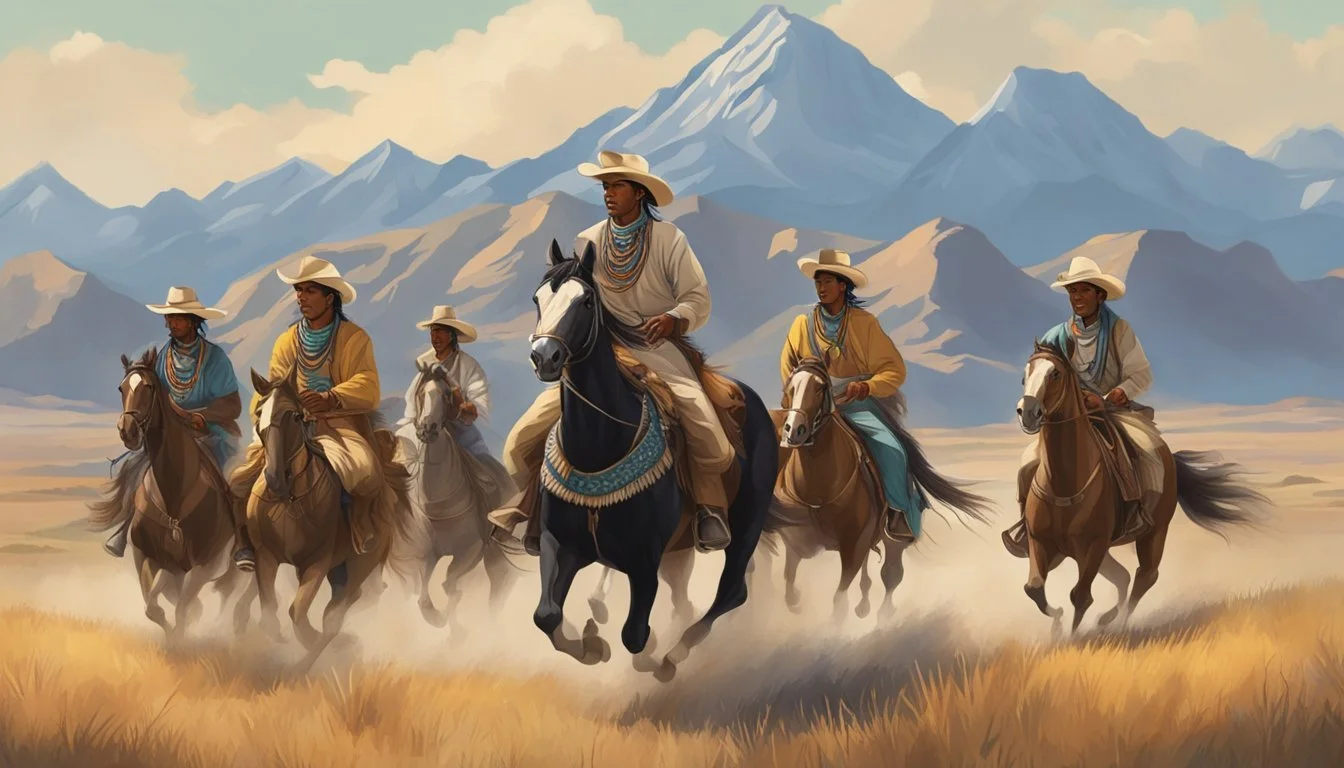Yellowstone Exposes Harsh Truths of Rural America and the Silent Struggles of Veterans
Yellowstone, the hit drama series on Paramount Network, offers a compelling portrayal of rural America through its depiction of the Dutton family's struggles in Montana. Created by Taylor Sheridan, the show has captivated audiences with its authentic representation of life in the American West. Yellowstone's narrative weaves veteran issues into its storylines, reflecting the unique challenges faced by former military personnel in rural communities.
Kevin Costner's John Dutton leads a cast of complex characters navigating the harsh realities of ranch life while grappling with personal and societal conflicts. The series explores themes of land ownership, family legacy, and the socioeconomic pressures threatening traditional ways of life. Yellowstone's portrayal of veterans adds depth to its exploration of rural America, shedding light on the difficulties of reintegration and the limited resources available in remote areas.
By addressing veteran issues within the context of a rural setting, Yellowstone contributes to a broader conversation about the diverse experiences of those who have served in the military. The show's nuanced approach to this topic resonates with viewers across the country, highlighting the importance of understanding and supporting veterans in all communities, particularly those far from urban centers.
Yellowstone's Narrative and Rural America
Yellowstone's portrayal of the American West offers a vivid reflection of rural life and its challenges. The show's narrative weaves together family drama, political tensions, and cultural conflicts to create a compelling depiction of contemporary rural America.
Depicting the Dutton Family's Struggles
The Dutton family, led by patriarch John Dutton, serves as the focal point of Yellowstone's narrative. Their struggle to maintain control of their vast ranch mirrors the real-world challenges faced by many rural landowners.
Land rights and preservation are central themes, as the Duttons fight against encroaching development and outside interests.
The show explores the complexities of family legacy and the pressure to maintain a way of life that is increasingly threatened by modernization.
John Dutton's character embodies the traditional values of the American West, often clashing with changing societal norms and expectations.
Authenticity in Replicating Rural American Life
Yellowstone's creators have taken great care to authentically portray the nuances of rural life in the American West.
The show depicts the day-to-day realities of ranching, including the physical demands and economic challenges faced by those in the industry.
Rural communities are portrayed with depth, showcasing both their tight-knit nature and the internal conflicts that can arise.
The series addresses pressing issues affecting rural America, such as economic disparity, environmental concerns, and the impact of urbanization on traditional ways of life.
By presenting these complex themes, Yellowstone offers viewers a window into the often-overlooked realities of rural American communities.
Ranching as a Way of Life
Ranching represents a core aspect of rural American culture, deeply rooted in tradition yet facing modern challenges. The lifestyle embodies hard work, self-reliance, and a profound connection to the land.
Economic Pressures and Land Ownership
Ranchers confront significant economic pressures in today's market. Rising operational costs, fluctuating cattle prices, and competition from large-scale operations strain smaller family-owned ranches. Land values have skyrocketed, making it difficult for new generations to enter the industry or expand existing operations.
Property taxes and inheritance laws pose additional hurdles. Many ranchers struggle to keep their land within the family due to estate taxes. Some are forced to sell portions of their property to developers or wealthy outsiders seeking vacation homes.
Climate change impacts further complicate matters. Droughts and unpredictable weather patterns affect grazing lands and water availability, increasing production costs and risks.
Ranching Traditions and Modern Challenges
Ranching traditions emphasize practical skills, resourcefulness, and a strong work ethic. Experienced ranch hands pass down knowledge of animal husbandry, land management, and equipment maintenance to younger generations.
These time-honored practices now intersect with modern technology. GPS tracking for livestock, advanced breeding techniques, and precision agriculture help increase efficiency and productivity.
Ranchers must balance preserving their heritage with adapting to changing markets and consumer preferences. Some diversify into agritourism or specialty meat production to stay competitive.
Environmental regulations and public land use policies create additional complexity. Ranchers navigate grazing rights on federal lands while addressing concerns about wildlife conservation and ecosystem management.
Socioeconomic and Political Themes
Yellowstone explores complex socioeconomic and political issues facing rural America through its characters and storylines. The show tackles wealth disparity, land ownership conflicts, and political power struggles that shape life in the modern American West.
Wealth Disparity and Gentrification
The series portrays stark economic contrasts in rural Montana. Wealthy outsiders buy up land for vacation homes and developments, driving up property values. This gentrification prices out long-time residents and ranchers.
The Dutton family's vast ranch represents old money and land-based wealth. In contrast, newer characters like Market Equities embody corporate interests seeking to profit from rural development.
Native American communities, particularly the fictional Broken Rock Indian Reservation, face economic hardships. The show highlights their limited opportunities and the impact of historical land dispossession.
Political Maneuvering and Land Disputes
Land ownership forms the core of Yellowstone's political conflicts. The Dutton family fights to maintain control of their ranch against various threats.
Local politics play a crucial role, with characters vying for positions like livestock commissioner or governor to protect their interests. These political battles often intersect with land use disputes.
The show depicts complex negotiations and conflicts between ranchers, developers, and the Broken Rock Reservation. Water rights, grazing permits, and proposed developments become flashpoints for larger struggles over the region's future.
Yellowstone showcases how rural issues like wolf reintroduction or pipeline construction can become politically charged. Characters must navigate federal, state, and tribal jurisdictions to achieve their goals.
Representation of Indigenous Peoples
Yellowstone explores complex issues facing Native American communities through its portrayal of the fictional Broken Rock Indian Reservation. The show depicts ongoing struggles for rights, land, and cultural preservation.
Native American Rights and Historical Injustices
The series highlights the long-standing fight for Native American rights. Characters from Broken Rock Reservation often clash with local and federal authorities over treaty violations and resource exploitation.
Historical injustices are woven into storylines, showing how past government policies continue to impact present-day tribal communities. Land seizures, forced relocation, and cultural suppression are referenced as ongoing sources of conflict.
Yellowstone portrays legal battles and grassroots activism as key strategies in addressing these injustices. Tribal leaders are shown negotiating with government officials and using media coverage to raise awareness of their causes.
Cultural Preservation and Land Disputes
Cultural preservation is a central theme in Yellowstone's Indigenous storylines. The show depicts traditional ceremonies, language use, and efforts to pass down customs to younger generations.
Land disputes form a major conflict between the Broken Rock tribe and non-Native ranchers. The series illustrates how these disagreements stem from different views on land ownership and usage rights.
Yellowstone showcases the tribe's efforts to reclaim ancestral territories and protect sacred sites from development. Environmental concerns often intersect with cultural preservation, as characters fight against projects threatening both land and heritage.
The show also touches on economic challenges facing reservations, including debates over casino development and natural resource management.
Environmental Conservation and Development
Yellowstone National Park exemplifies the ongoing tension between preserving natural habitats and fostering economic growth in rural areas. This struggle shapes policies, land use decisions, and community dynamics in the surrounding region.
Struggle Between Preservation and Economic Development
Yellowstone National Park faces constant pressure from development interests seeking to expand tourism infrastructure and exploit nearby resources. Environmental regulations aim to protect the park's unique ecosystem, but local communities often push for increased economic opportunities.
Wildlife corridors connecting Yellowstone to surrounding wilderness areas are threatened by encroaching development. Conservation easements have emerged as a tool to preserve private lands adjacent to the park, creating buffer zones for wildlife.
The park's geothermal features attract millions of visitors annually, driving the local tourism economy. However, increased visitation strains park resources and habitats. Park managers must balance access with protection of sensitive areas.
Nearby towns grapple with housing shortages and rising costs of living as the region's popularity grows. Some argue for loosening development restrictions, while others prioritize maintaining the area's natural character.
Cultural and Media Influence
Yellowstone has emerged as a cultural touchstone, reshaping perceptions of the modern Western genre and rural America. The show's impact extends far beyond entertainment, influencing media portrayals and public discourse.
Yellowstone as a Cultural Phenomenon
Yellowstone's popularity has skyrocketed, captivating audiences across demographic boundaries. The series taps into the rural-urban divide, sparking conversations about land rights and the changing face of the American West. Its authentic portrayal of complex characters navigating tradition and progress resonates deeply with viewers.
Social media platforms have amplified Yellowstone's cultural footprint. Fan discussions, memes, and theories flood online spaces, extending the show's influence beyond the screen. This digital engagement has created a passionate community, further solidifying Yellowstone's status as a cultural phenomenon.
The series has also influenced tourism, with fans flocking to filming locations and ranches featured in the show. This influx of visitors has boosted local economies and raised awareness about rural lifestyles.
Hollywood's Portrayal of the Modern Western
Yellowstone has reinvigorated the Western genre, offering a fresh take on traditional themes. The show blends classic Western elements with contemporary issues, creating a unique storytelling approach that appeals to modern audiences.
Its success has inspired other productions to explore similar themes and settings. Hollywood has taken note of Yellowstone's authenticity and nuanced portrayal of rural life, leading to a resurgence of Western-inspired content.
The series stands out for its depiction of Native American characters and their struggles. This representation has challenged Hollywood's historical stereotypes and encouraged more inclusive storytelling in the genre.
Yellowstone's impact on the entertainment industry extends to its visual style, soundtrack choices, and character development. These elements have set new standards for modern Westerns, influencing how other shows and films approach the genre.
Realism and Veteran Issues
Yellowstone offers a stark portrayal of veterans grappling with trauma in rural America. The show's depiction highlights the unique challenges faced by former service members in isolated communities.
Combatting Veteran Trauma in Rural Settings
Veterans in Yellowstone struggle with PTSD and reintegration issues far from urban support systems. The show portrays characters like Rip Wheeler and Kayce Dutton dealing with their military pasts in a rugged, rural environment.
Limited access to mental health services in remote areas is a key challenge. Veterans on the show often cope through physical labor on the ranch or seek solace in nature.
The series illustrates how tight-knit rural communities can both help and hinder veterans' recovery. Family and neighbors provide support, but small-town dynamics sometimes exacerbate isolation.
Yellowstone's creators consulted with real veterans to ensure authenticity. This attention to detail lends credibility to the show's portrayal of rural veteran experiences.
The series explores how combat skills translate to civilian life on a ranch. Veterans' military training proves both an asset and a burden in their new roles.







